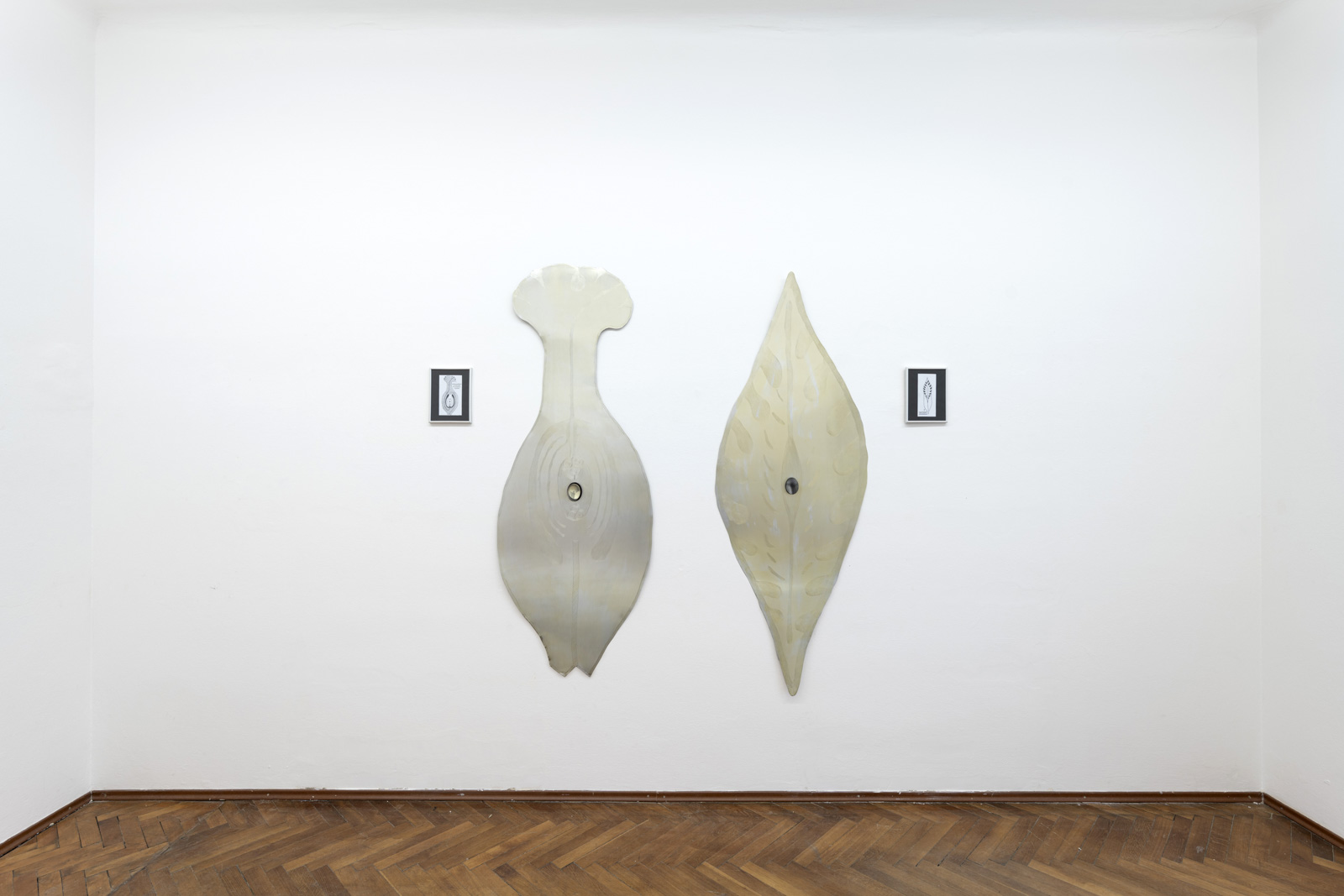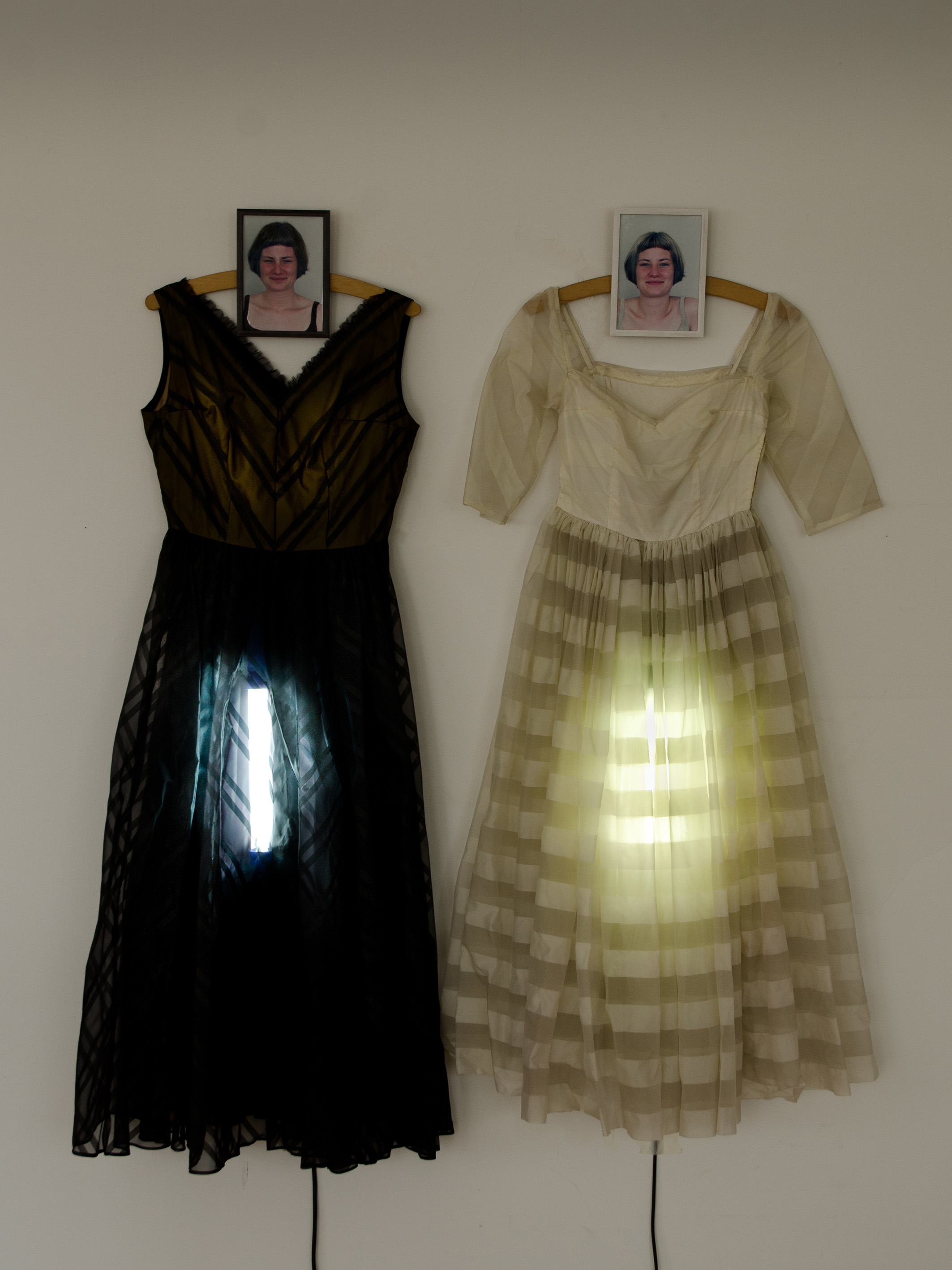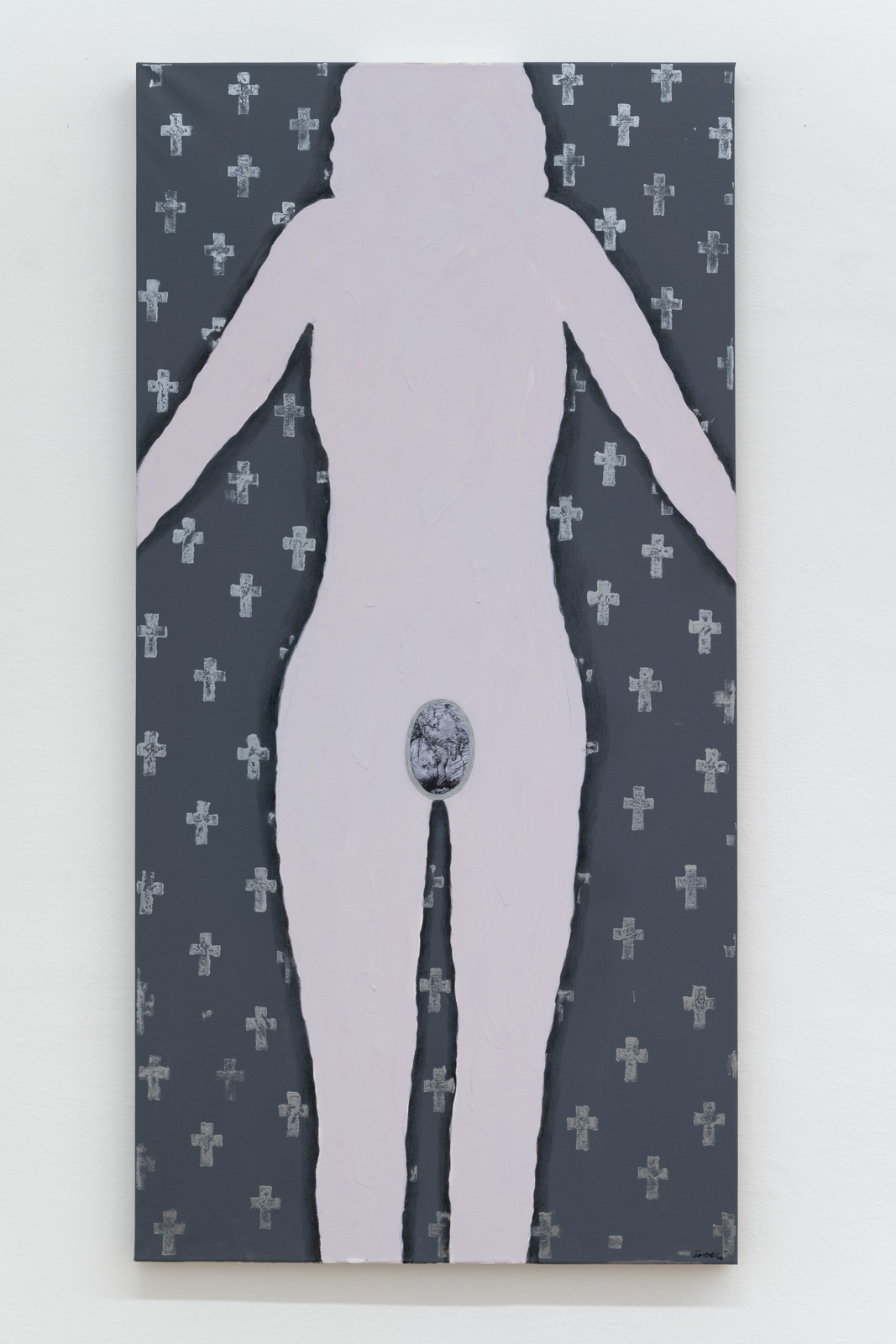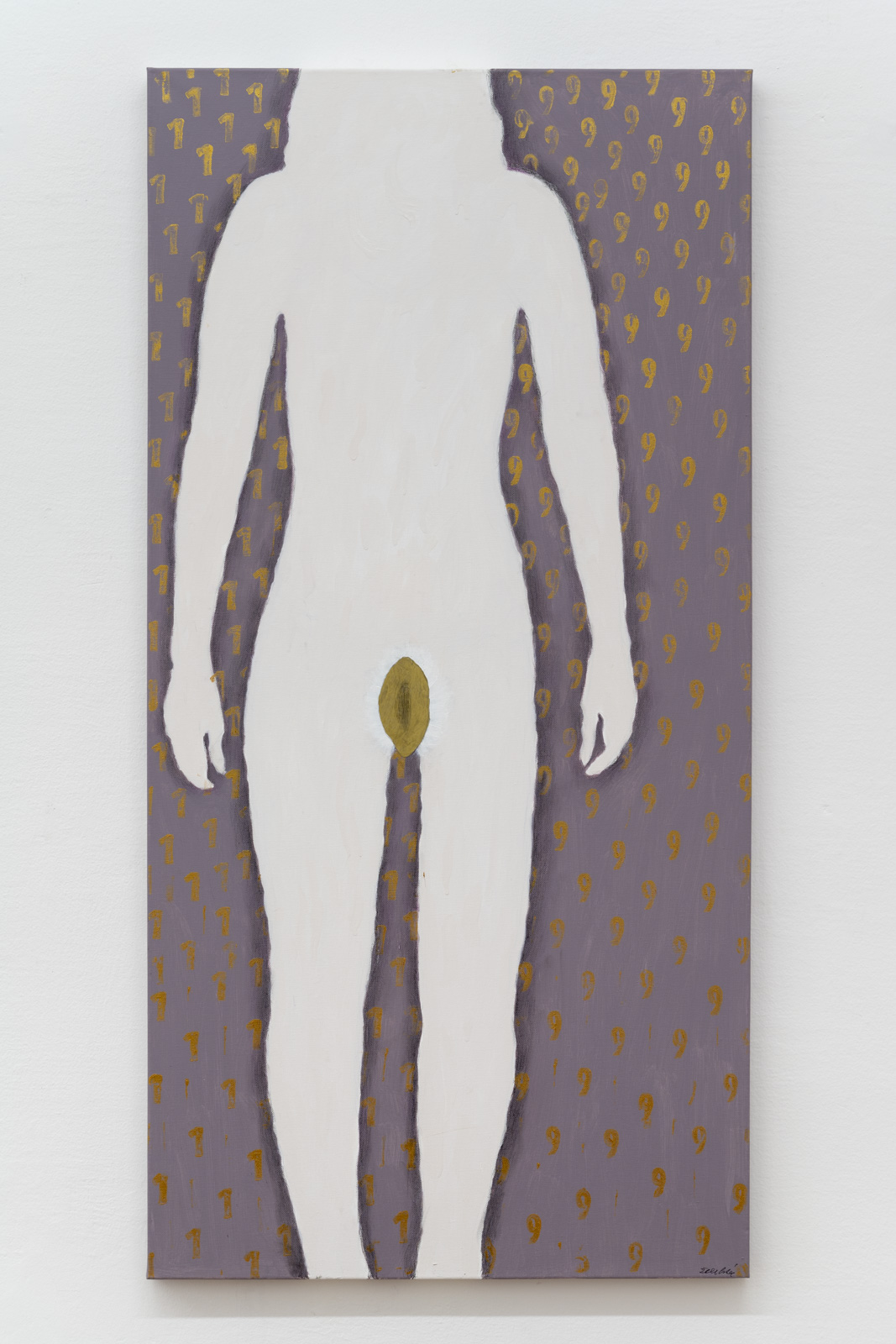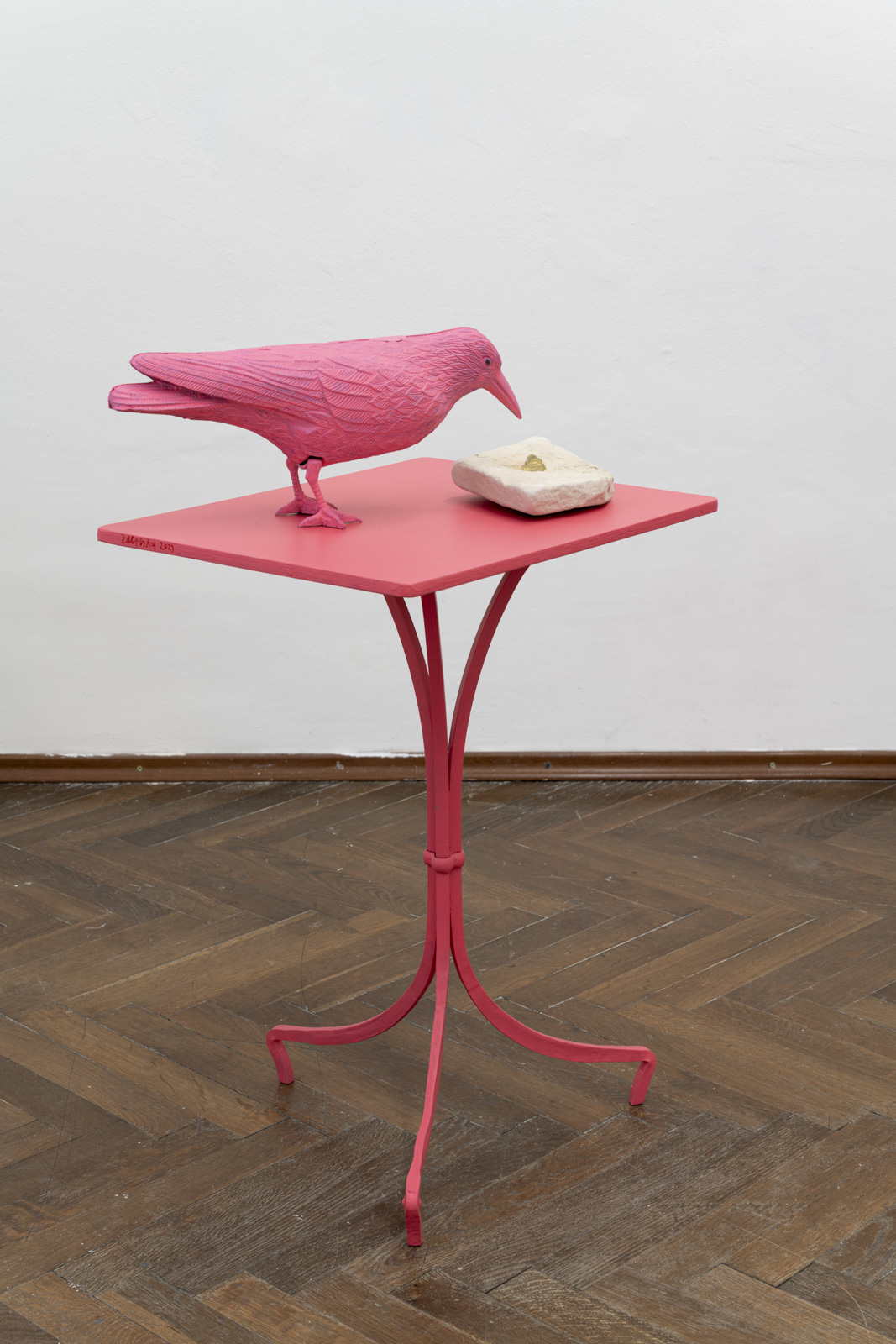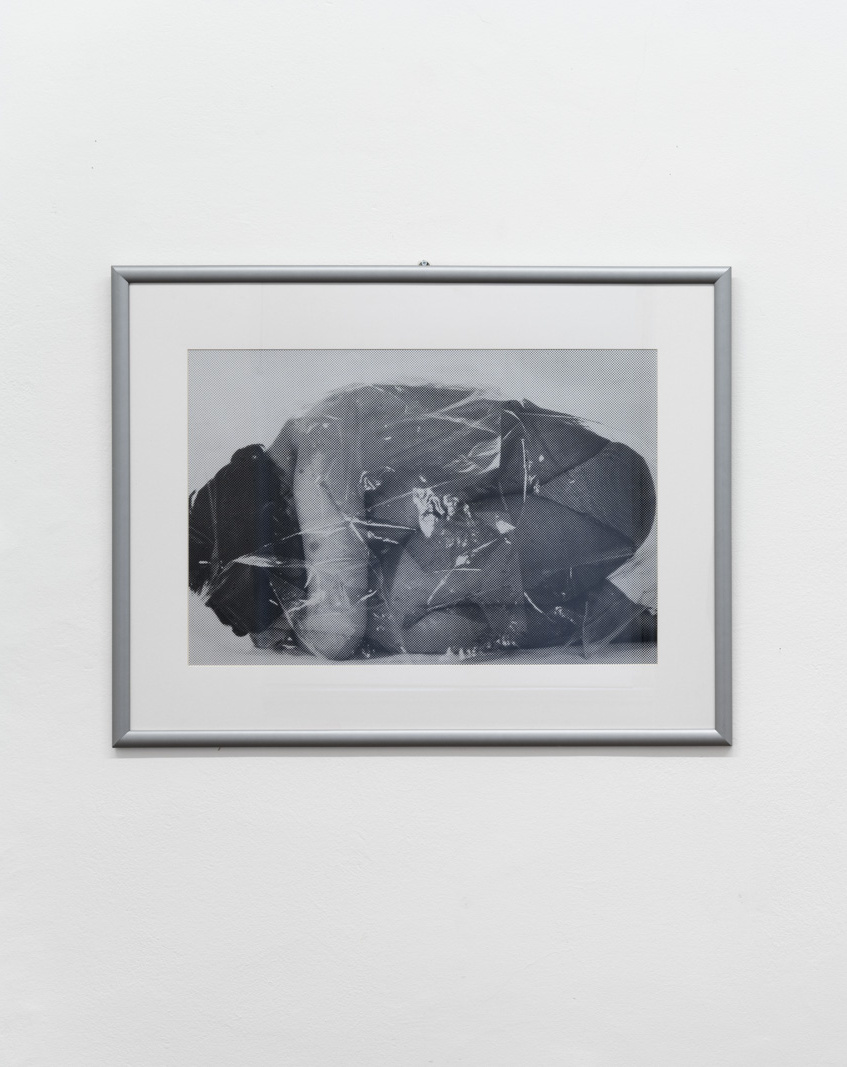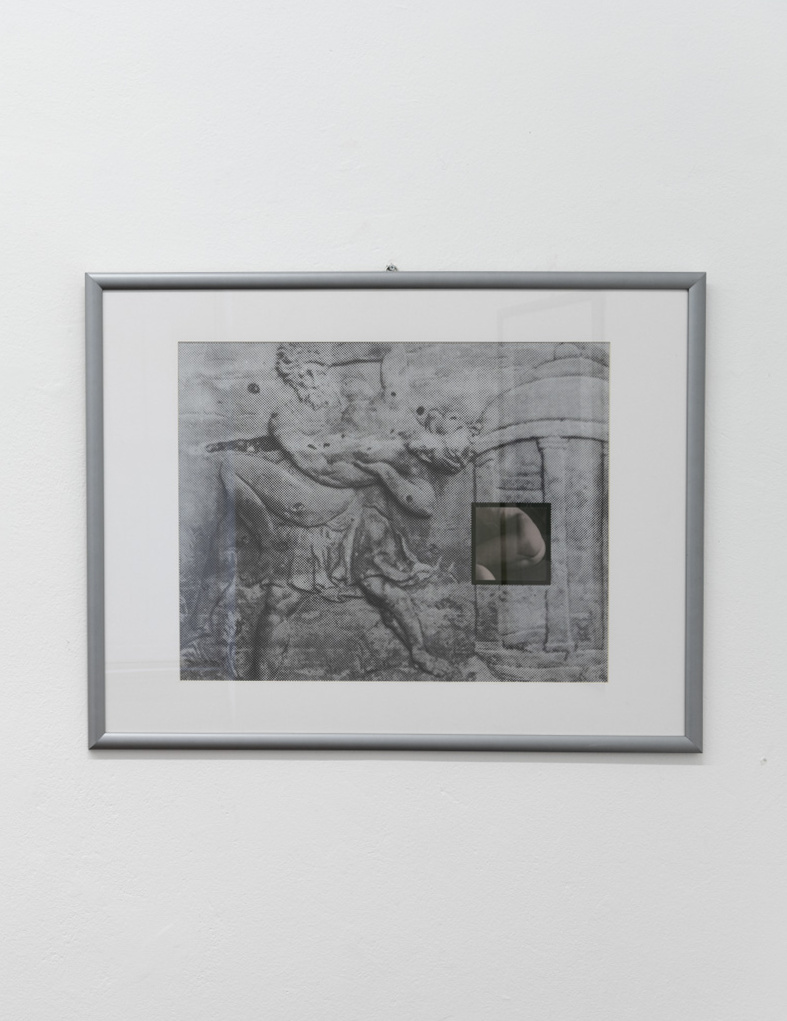Gandy gallery
Jana Želibská
In her solo exhibition 3×2 DOUBLE for the Gandy gallery, Želibská presents several older works together with very recent ones. The graphic sheets and objects from the 2nd half of the 1970s and the beginning of the 1980s contain their radical iconography that she has developed since 1965, and they introduce also new elements derived from the theme of the female body.
The female body ceases to be a celebration of the revolution towards independence and gender equality, but appears as vulnerable, fragile, changing over time, falling in on itself. The objects, based on a botanical scientific illustration of the incision of the reproductive organs of plants, set the viewers a distorted mirror image of him or herself on a shiny metal surface, partially covered with a scribbled drawing. The female body is replaced by a fragment of it (a symbolic vagina). The public performance of the woman as object is represented by a pair of festive dresses.
Jana Želibská’s paintings and objects often respond to contemporary political events from a female perspective. They often force porosity through the deliberate absurdity of their connections, which, however, do not lack unusual humour and insight. The urgent patterning of current events, however, is projected onto the surface of paintings and objects, marked by found motifs. The number 19 appears, the motif of the tree, the fissure both as a wound and as a vagina, providing pleasure and the giver of new life. The artist reacted spontaneously to the pandemic of Covid-19, a test of relations within society. In her works we find ideas of disrupted intimacy as well as a reflection of melancholic atmosphere we have lived through.
Biography
Jana Želibská (1941, Olomouc), visual artist living and working in Bratislava, play a key role on Slovak artistic scene from the end of the Sixties. She studied at the Academy of Fine Arts and Design in Bratislava and she started her artistic and exhibition career in 1967 with the exhibition Možnosť odkrývania (Possibility of uncovering) at Gallery of Cyprián Majerník in Bratislava. During the following year she spent several months in a residency program in Paris, but she returned back to already occupied Czechoslovakia. Despite this fact, her exhibition activity was and still continues to be very rich. Her work was exhibited in many Slovak, as well as foreign institutions: Tate Modern (London), Walker Art Center (Minneapolis), Ludwig Muzeum (Budapest), Zacheta – Narodowa Galeria Sztuky (Warsaw), Museum moderner Kunst Stiftung Ludwig (Vienna), Gosudarstvennyj centre sovremennovo iskusstva (Moscow), Space Apollonia (Strasbourg), Muzeul National de Arta Contemporana (Bucharest), Centre tchèque (Paris), Embassy of the Slovak Republic (Washington D. C.), Museum moderner Kunst Stiftung Wörlen (Passau), Národní galerie v Praze (Prague), XLVIII. Biennale di Venezia, Czechoslovak pavilion, Giardini di Castello (Venice), Courtyard Gallery (New York), Musée d´Art Moderne de la ville de Paris (Paris), Museo Universitario (Mexico) and others.
Gandy gallery
When the Gandy gallery took root in Prague (Czechoslovakia ) in 1992, shortly after the fall of communism in Central and Eastern Europe, the stranglehold on local creation had only just been loosened. In order to mitigate the effects of this long break with the West, the first exhibitions were devoted to artists such as Patrick Raynaud (1992), Nan Goldin (1996, 1998), Jonas Mekas (1996), Joseph Grigely (2001), Matali Crasset (2002) or Douglas Gordon (1997)… and also by introducing the Czech artists Vaclav Stratil and Jiri David.
The gallery moved to Bratislava (Slovakia) in 2005, whose central geography (close to Austria, the Czech Republic, Hungary, the Balkans…) gives it a position at the crossroads of cultures. Nadine Gandy, its founder, then decided to put the spotlight on the artists of these countries, whose work is sorely lacking visibility.
Currently, the gallery brings together some thirty artists, mostly from former Soviet countries (Zbyněk Baladrán, Zorka Saglova, Alva Hajn, Ilija Šoškić, Jana Želibská, Marysia Lewandowska…) whose work addresses issues related to identity, memory, the body, migration, and archive work.
The gallery fosters ongoing research, discoveries, experimentations and carefully constructed relationships in a tireless and passionate manner.
In 2012, the French government bestowed Nadine with the title of Chevalier of the Order of Arts and Letters.
In 2021, on the occasion of its future 30th anniversary, the gallery has founded the non-profit association ZoomEuropa.

Nadine Gandy
Jana Želibská
In her solo exhibition 3×2 DOUBLE for the Gandy gallery, Želibská presents several older works together with very recent ones. The graphic sheets and objects from the 2nd half of the 1970s and the beginning of the 1980s contain their radical iconography that she has developed since 1965, and they introduce also new elements derived from the theme of the female body.
The female body ceases to be a celebration of the revolution towards independence and gender equality, but appears as vulnerable, fragile, changing over time, falling in on itself. The objects, based on a botanical scientific illustration of the incision of the reproductive organs of plants, set the viewers a distorted mirror image of him or herself on a shiny metal surface, partially covered with a scribbled drawing. The female body is replaced by a fragment of it (a symbolic vagina). The public performance of the woman as object is represented by a pair of festive dresses.
Jana Želibská’s paintings and objects often respond to contemporary political events from a female perspective. They often force porosity through the deliberate absurdity of their connections, which, however, do not lack unusual humour and insight. The urgent patterning of current events, however, is projected onto the surface of paintings and objects, marked by found motifs. The number 19 appears, the motif of the tree, the fissure both as a wound and as a vagina, providing pleasure and the giver of new life. The artist reacted spontaneously to the pandemic of Covid-19, a test of relations within society. In her works we find ideas of disrupted intimacy as well as a reflection of melancholic atmosphere we have lived through.
Biography
Jana Želibská (1941, Olomouc), visual artist living and working in Bratislava, play a key role on Slovak artistic scene from the end of the Sixties. She studied at the Academy of Fine Arts and Design in Bratislava and she started her artistic and exhibition career in 1967 with the exhibition Možnosť odkrývania (Possibility of uncovering) at Gallery of Cyprián Majerník in Bratislava. During the following year she spent several months in a residency program in Paris, but she returned back to already occupied Czechoslovakia. Despite this fact, her exhibition activity was and still continues to be very rich. Her work was exhibited in many Slovak, as well as foreign institutions: Tate Modern (London), Walker Art Center (Minneapolis), Ludwig Muzeum (Budapest), Zacheta – Narodowa Galeria Sztuky (Warsaw), Museum moderner Kunst Stiftung Ludwig (Vienna), Gosudarstvennyj centre sovremennovo iskusstva (Moscow), Space Apollonia (Strasbourg), Muzeul National de Arta Contemporana (Bucharest), Centre tchèque (Paris), Embassy of the Slovak Republic (Washington D. C.), Museum moderner Kunst Stiftung Wörlen (Passau), Národní galerie v Praze (Prague), XLVIII. Biennale di Venezia, Czechoslovak pavilion, Giardini di Castello (Venice), Courtyard Gallery (New York), Musée d´Art Moderne de la ville de Paris (Paris), Museo Universitario (Mexico) and others.
Gandy gallery
When the Gandy gallery took root in Prague (Czechoslovakia ) in 1992, shortly after the fall of communism in Central and Eastern Europe, the stranglehold on local creation had only just been loosened. In order to mitigate the effects of this long break with the West, the first exhibitions were devoted to artists such as Patrick Raynaud (1992), Nan Goldin (1996, 1998), Jonas Mekas (1996), Joseph Grigely (2001), Matali Crasset (2002) or Douglas Gordon (1997)… and also by introducing the Czech artists Vaclav Stratil and Jiri David.
The gallery moved to Bratislava (Slovakia) in 2005, whose central geography (close to Austria, the Czech Republic, Hungary, the Balkans…) gives it a position at the crossroads of cultures. Nadine Gandy, its founder, then decided to put the spotlight on the artists of these countries, whose work is sorely lacking visibility.
Currently, the gallery brings together some thirty artists, mostly from former Soviet countries (Zbyněk Baladrán, Zorka Saglova, Alva Hajn, Ilija Šoškić, Jana Želibská, Marysia Lewandowska…) whose work addresses issues related to identity, memory, the body, migration, and archive work.
The gallery fosters ongoing research, discoveries, experimentations and carefully constructed relationships in a tireless and passionate manner.
In 2012, the French government bestowed Nadine with the title of Chevalier of the Order of Arts and Letters.
In 2021, on the occasion of its future 30th anniversary, the gallery has founded the non-profit association ZoomEuropa.

